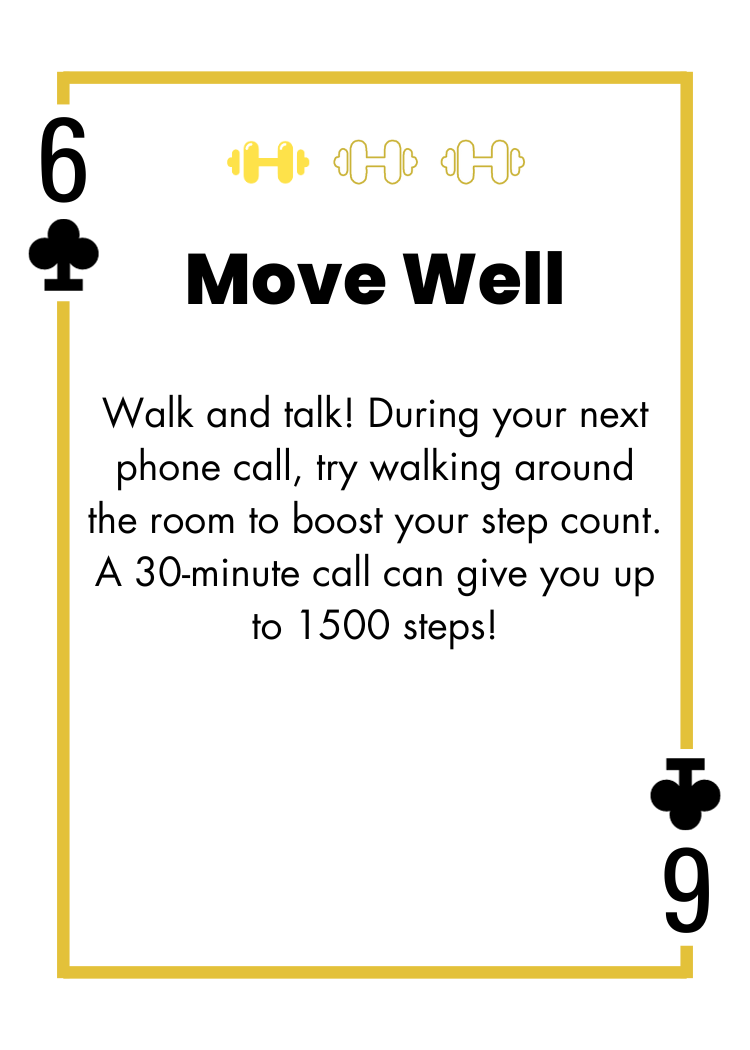6 of Clubs - Walk and Talk

Walking and talking – that seems easy enough, right?
Imagine taking two calls a day and clocking 3000 more steps than you usually would – that’s more than 100 kcal, accumulating to 36,500 kcal per year, equating to over 180 broccolis…
If you’d like more manageable and achievable tips like that, specific to your lifestyle and goals, sign up for wellness coaching with our experts today. Our physical activity experts can help you integrate movement into your everyday. Exercise doesn’t have to be a chore – let us guide you, 1% at a time.

Instead of sitting down to socialise with a coffee, make the choice to walk and talk with close friends. Perhaps instead of sit-down meeting, have walk and talk meeting with co-workers. These little investment moments of physical activity all add up to pay off later with massive health benefits.
The key benefit from walking and becoming active is it significantly reduces your risk for cardiovascular disease, Type 2 diabetes, and obesity (ACSM).
Individuals who are physically active tend to live longer and healthier lives. Research shows that moderate physical activity, such as 30 minutes a day of brisk walking, significantly contributes to longevity. Even a person with risk factors like high blood pressure, diabetes or even a smoking habit can gain real benefits from incorporating regular physical activity into their daily life (ACSM).
Taking a brisk walk with one or more friends is a form of socialising. Socialisation is one of the essential health dimensions. Socialising helps to promote positive mental health by lessening isolation and loneliness. These outcomes are associated with heart disease, diabetes, arthritis, depression, chronic stress, and early death (Godman 2023).
Socialising also exercises the brain stimulating thinking skills. When an individual socialises, the brain is engaged to interpret other people’s facial expressions, speech, emotions, and body language. As a result, this brain engagement runs your reactions by turning thoughts into words, facial expressions, and movements. All this engagement promotes brain cell connections and keeps both critical thinking and memory sharp. Additionally, the physical activity from walking also stimulates the growth of new brain cells. By talking while you walk, this provides twice the dose of brain health benefits (Godman 2023).
https://www.health.harvard.edu/staying-healthy/5-surprising-benefits-of-walking
Small changes CAN make a big difference – that’s what The 1% Club is all about.
Godman, H. (2023, June 1). Better together: The many benefits of walking with friends. Harvard Health. https://www.health.harvard.edu/staying-healthy/better-together-the-many-benefits-of-walking-with-friends
Starting a walking program – American College of Sports Medicine. (n.d.). https://www.acsm.org/docs/default-source/files-for-resource-library/starting-a-walking-program.pdf?sfvrsn=85e9d2d9_2

 See Other Cards!
See Other Cards!